People
The DISPERSE team comprises a core group of staff located in York and Paris, and a wider group of specialists who are external members and advisors
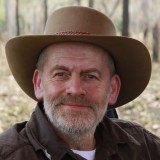
Geoff Bailey is Anniversary Professor of Archaeology in the University of York, and Chairman of the EU COST programme ‘Submerged Prehistoric Archaeology and Landscapes of the Continental Shelf’ (SPLASHCOS).
His research interests are in coastal prehistory and submerged landscapes, Quaternary-scale environmental change, and the effect of time scale and time perspective on the observation and interpretation of the archaeological record.
He has field experience in many parts of the world, across Africa, the Americas, Australia, Europe, the Far East and SW Asia, and has led major projects in Australia, Greece, Saudi Arabia and the UK.
>> Institutional webpage
Geoffrey King is Senior Research Professor (Classe Exceptionelle) in the Tectonics Laboratory of the Institut de Physique du Globe de Paris, and Honorary Professor at the University of York.
His research interests are in earthquake hazard, modelling of tectonic deformation, and the role of landforms in hominin evolution.
His fieldwork experience includes China, Ethiopia, Greece, India, Italy, Kenya, the Levant, Nepal, New Zealand, Pakistan, South Africa, Tibet, Turkey and the USA.
>> Institutional webpage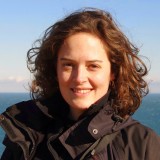
Maud Devès took her early training in materials science and geophysics, and completed her PhD at the Institut de Physique du Globe de Paris in 2010 on magma genesis in places of high strain continental deformation. She has taken additional training in the psychology of disasters in 2014, and is a member of the scientific board of the Association Française de Prévention des Catastrophes Naturelles.
Her research interests are in the numerical modelling of lithosphere deformation, the relationship between faulting and volcanism, landscape evolution in relation to archaeology, and the human impact of natural disasters. She has conducted field research in France, Greece, Tibet, Turkey and the USA.
In DISPERSE she is responsible for mapping and analysis of landscape evolution in relation to the Palaeolithic archaeology of the southern Levant and Saudi Arabia.
In 2014, she took up the coordination of the research axis ‘Risks, Expertise and Disaster Media Coverage’ for the programme ‘Earth Politics’, a new initiative funded by Sorbonne Paris Cité, and in 2015 was appointed ‘Maitre de Conférence’, a joint appointment between IPGP and Université Paris 7, to develop new research at the crossroads between psychology and earth science on the topic of disaster prevention and crisis management.
>> Institutional webpage
Niklas Hausmann took his first degree in Archaeology and Geosciences at the Christian-Albrechts-University, Kiel, Germany, and his MA in Archaeology at the University of York, where he has recently completed a PhD thesis ‘The Farasan Islands: an isotope study’.
His research interests are in Mesolithic archaeology, coastal prehistory and geoarchaeology, sclerochronology and climate change, and he has field experience in Brazil, Germany, Jordan, Scandinavia, Spain and the UK.
His role in DISPERSE is to develop methods of stable isotope and trace-element analysis of the marine molluscs of the Farasan shell mounds to obtain information on seasonality, climate change and site formation processes.
In 2016 he took up a a Marie Sklodowska-Curie Individual Fellowship at the FORTH (Foundation for Research and Technology Hellas) Institute of Electronic Structure and Laser Lab, in Crete, to develop laser-ablation methods of analysing mollusc growth structures.
>> Institutional webpage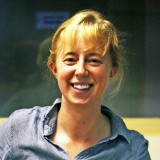
Robyn Inglis took her Undergraduate degree in Archaeology and Anthropology (University of Cambridge) and the MSc in Geoarchaeology (University of Reading), returning to Cambridge to complete her PhD thesis in 2012, entitled ‘Human Occupation and Changing Environments during the Middle to Later Stone Ages: Soil Micromorphology at Haua Fteah, Libya’.
Her research interests are in interactions between human populations and their environments and landscapes, especially the rise and spread of modern human populations during OIS 5–3. She has undertaken fieldwork in Eastern Europe, Jordan, Lesotho, Libya and the UK.
In DISPERSE, she is responsible for Palaeolithic archaeological and geomorphological survey and palaeoenvironmental analysis in SW Saudi Arabia.
In 2016 she won a Marie Sklodowska-Curie International Fellowship at Macquarie University, Australia to develop expertise in the geomorphology of surface archaeology in semi-arid environments.
>> Institutional webpage
Eva Laurie is an archaeomalacologist with training in archaeology and a PhD completed at the University of York in 2006 entitled ‘An Investigation of the Common Cockle (Cerastoderma edule (L.): Collection practices at the kitchen midden sites of Norsminde and Krabbesholm, Denmark’.
Her research interests are in the analysis of marine and terrestrial molluscs as sources of information about human subsistence and environment, and the Mesolithic-Neolithic transition.
Her role in DISPERSE is to analyse the marine molluscan remains from the Farasan shell mounds.
>> Institutional webpage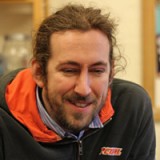
Matt Meredith-Williams was trained in Physical Geography (University of Leeds BSc) and Quaternary Science (University of Cambridge MPhil) before completing a PhD at the University of York in 2012 on ‘Prehistoric Coastal Archaeology in the Farasan Islands, Saudi Arabia’.
His research interests are in coastal geoarchaeology and prehistory and the Mesolithic-Neolithic transition, and he has conducted field research in Australia, the UK and West Africa.
In DISPERSE he is responsible for survey and excavation of coastal sites in the southern Red Sea with particular reference to SW Saudi Arabia and the shell mounds of the Farasan Islands.
In 2015 he took up a Marie Sklodowska-Curie International Fellowship to develop expertise in coastal archaeology and data systems at the University of Auckland, New Zealand, and in 2016 was appointed as a Lecturer in Prehistory and GIS mapping at La Trobe University, Australia.
>> Institutional webpage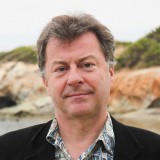
Garry Momber is a maritime archaeologist and professional diver with over two decades of experience in underwater and maritime archaeology. He is Director of the Maritime Archaeology Trust, Southampton, and part-time Research Associate at the University of York.
His research interests are in underwater archaeology, submerged landscapes and the management of the underwater cultural heritage of the continental shelf.
He has conducted underwater research and assessment widely in the Arabian-Persian Gulf, the Atlantic, the Baltic, La Manche, the Mediterranean, the North Sea and the Red Sea.
His role in DISPERSE is to coordinate offshore and underwater research in the Red Sea and to lead diving operations.
>> Institutional webpage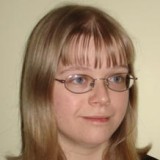
Isabelle Winder took her first degrees in Geography and Palaeoanthropology at the University of Sheffield, and completed her PhD at the University of York in 2012 on ‘Hominin Landscapes and Co-evolutionary Ecology: accommodating logical incoherence and complexity’.
Her research interests are in the comparative anatomy and evolutionary ecology of humans and primates, hominin palaeoecology and Palaeolithic archaeology, and the structure and distribution of faunal communities in Plio-Pleistocene Africa. She has conducted field research in the UK.
Her role in DISPERSE is to model primate and hominin dispersal and to investigate the evolution of primate foot anatomy and locomotor behaviour in relation to landscape variability.
In 2015, she was appointed to a permanent lectureship in the Department of Biology at Bangor University, UK, to develop a new research and teaching strand in Human Evolution.
>> Institutional webpage
Saud Al Ghamdi was trained in archaeology at King Saud University (BA) and the Department of Archaeological Sciences, Bradford University (MSc) and completed his PhD at the University of Durham in 2011 on ‘The Neolithic Archaeology of Southwest Saudi Arabia’. He held a Lectureship in Archaeology at King Saud University before moving to his current position as Senior Research Archaeologist at the Qatar Museums Authority
His research interests are in the prehistoric archaeology of the Arabian Peninsula with particular reference to archaeological survey, the Neolithic period and rock art.
His role in DISPERSE is to help with the organisation of archaeological survey and excavation in Saudi Arabia
>> Institutional webpage
Abdullah Alsharekh completed his PhD at the University of Cambridge in 1996 and is currently Associate Professor and Dean of the College of Tourism and Archaeology at King Saud University, Riyadh.
His research interests are in the prehistory of Saudi Arabia, especially the Palaeolithic period, and in the use of remote sensing techniques in archaeological survey. He directed the Thumamah Project, involving survey and excavation of later prehistoric stone structures in the Thumamah region near Riyadh, and co-directed the joint Saudi-UK Southern Red Sea project in SW Saudi Arabia and the Farasan Islands.
His role in DISPERSE is co-director of overall fieldwork activities in Saudi Arabia.
>> Institutional webpage
Kasey Beresford took her early training in the Department of Anthropology at the University of Auckland and is currently undertaking a PhD there on 'The Evidence for a Global Transition to Low-level Food Production in the Early-Mid Holocene'.
Her research interests are in coastal prehistory, shell mound formation and taphonomy, the theoretical basis for the construction of archaeological knowledge, and cultural pathways to food production. She has fieldwork experience in Australia, New Zealand and Saudi Arabia.
In DISPERSE she is helping to develop new field methods for the investigation and interpretation of the Farasan shell mounds
>> Institutional webpage
Katerina Douka is a specialist in the application of radiocarbon dating. She was trained in Archaeological Science in Greece and the UK prior to completing a PhD (2011, University of Oxford) on the ‘Chronology of the Middle to Upper Palaeolithic Transition in Mediterranean Europe by Improved Radiocarbon Dating of Shell Ornaments’. She is currently based at the Research Laboratory for Archaeology and the Oxford Radiocarbon Accelerator Unit, University of Oxford.
Her research interests include the development and application of radiocarbon and other scientific methods to the dating of terrestrial and marine samples, the compilation of high-precision Bayesian chronologies, the Middle and Upper Palaeolithic transition in Eurasia and the onset of the Neolithic in the eastern Mediterranean.
She is responsible for the radiocarbon dating component of DISPERSE.
>> Institutional webpage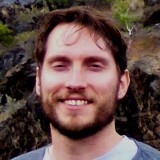
Simon Kübler was trained as a geologist and completed his PhD at the Ludwig-Maximilians University Munich in 2013 on active tectonics and paleoseismology of the Lower Rhine Graben, NW Germany.
His research interests are in studying the surface expression of active faults in slowly deforming continental rifts and the interaction between earthquake ruptures and surface processes using traditional field mapping approaches combined with satellite data analysis. He has conducted field work in central and southern Europe, East Africa, and the Western USA.
In DISPERSE he is working on field and satellite mapping of the geology, tectonics and edaphics of early hominin sites in the Kenya Rift.
>> Institutional webpage
Kurt Lambeck is Professor of Geophysics at the Australian National University, Canberra, and formerly President of the Australian Academy of Science.
His research interests include deformation of the Earth on intermediate and long time-scales, the interactions between surface processes and the solid earth, lithospheric and crustal deformation processes, and modelling of sea level change and the history of the Earth's ice sheets during past glacial cycles.
His role in DISPERSE is to contribute to modelling of sea-level change and palaeo-tidal movements in the Red Sea, and the reconstruction of palaeoshorelines.
>> Institutional webpage
Bernie Larsen was trained as an archaeologist at The University of Auckland completing his MA specialising in technological applications in archaeology.
His research interests are in formational approaches to archaeological science, geoarchaeology and quantitative applications of technology in archaeological investigation with a particular focus on terrestrial laser scanning.
His role in DISPERSE is in excavation of coastal sites in the southern Red Sea including the shell mounds of the Farasan Islands and potential applications of terrestrial laser scanning.
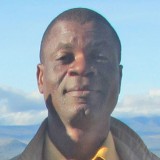
Peter Owenga took his BA in Geography (Moi University), his MSc in Environmental Studies (Planning and Management) (University of Eldoret), and a Postgraduate Diploma (Aerospace Survey) from ITC, Twente University, Netherlands. He was until recently a Research Officer with the Kenya Agricultural and Livestock Research Organisation (KALRO), Nairobi.
His research interests were in soil science and landuse planning, and he published a wide range of technical reports and publications on Kenyan landuse, agriculture and water management.
His role in DISPERSE was to contribute his expertise in soils and soil analysis to the reconstruction of edaphics in the Kenyan Rift.
† Peter died on 12 October 2015
>> Institutional webpage
Najeeb Rasul holds a PhD in Geological Oceanography from the University of Wales and is presently a Technical Advisor at the Saudi Geological Survey (SGS) in Jeddah.
His research interests concentrate on shallow and deep water sedimentary processes, depositional mechanisms and environmental aspects, including sediment dispersal and pathways.
He has been involved in research projects and cruises as chief scientist and principal investigator in the Atlantic, Indian and Pacific Oceans, Lakes Erie and Henderson, the Mediterranean, the Arabian Gulf, the Strait of Hormuz, Gulf of Oman, Arabian Sea, and the Red Sea.
In DISPERSE, his role is to help with the coordination and implementation of marine geological, sea-level and underwater research in Saudi Arabia.
>> Institutional webpage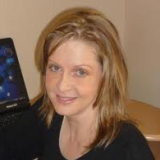
Sally C. Reynolds was trained as an archaeologist and mammal palaeontologist and completed her MSc in Archaeology and Anatomical Sciences at the University of the Witwatersrand, Johannesburg, South Africa and her PhD at Liverpool John Moores University in 2005. Since then she has completed Postdoctoral Fellowships in South Africa, France and the UK, and is currently Senior Lecturer in Hominin Palaeoecology in the Faculty of Science and Technology, Bournemouth University, and Deputy Head of the Institute for Studies in Landscape and Human Evolution.
Her research interests are in interactions between landscapes and evolutionary processes in Africa, especially evolutionary patterns in the eastern African region, which is highly affected by the Rift, versus other less active African regions, such as southern Africa.
In DISPERSE, she is working on the relationship between macromammalian fauna, palaeoenvironmental reconstructions and land use in the southern Kenyan Rift.
>> Institutional webpage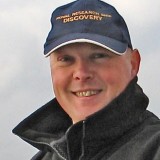
Eelco Rohling is specialised in palaeoceanography and palaeoclimate research with about 25 years of experience, and is a Fellow of the Royal Netherlands Academy of Arts and Sciences.
Eelco has since March 2013 been employed as Australian Laureate Fellow at the Research School of Earth Sciences, The Australian National University, and remains affiliated with his previous employer, the School of Ocean and Earth Science, University of Southampton, National Oceanography Centre, Southampton, UK.
His research interests are in reconstructing past ocean and climate change (including links with archaeology), with emphasis on sea-level change, monsoon variations, and climate sensitivity.
Eelco’s group has developed innovative ways to use Red Sea and Mediterranean records to derive continuous, highly resolved records of sea-level change over the past 500,000 years, with recent extention to 5.3 million years ago.
His role in DISPERSE is to help with the palaeoceanographic and palaeoclimatological study of sediment cores obtained from the Red Sea.
>> Institutional webpage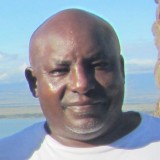
Stephen Rucina took his MPhil at the University of Wales Aberystwyth and his PhD at the University of Amsterdam, the Netherlands, in Late Quaternary Ecosystem Dynamics of High and Low Altitude Ecosystems of Kenya.
He is currently Senior Research Scientist in Palaeoecology and Head of the Palynology & Palaeobotany Section in the Earth Sciences Department at the National Museums of Kenya, with particular expertise in vegetation dynamics, palaeoenvironmental reconstruction and climate change.
His role in DISPERSE is to contribute to palaeoenvironmental reconstructions of landscapes in the Kenyan Rift in relation to studies of tectonic geomorphology
>> Institutional webpage
Dimitris Sakellariou is Research Director at the Institute of Oceanography, Hellenic Centre for Marine Research (HCMR), Vice-Chairman of the EU COST programme ‘Submerged Prehistoric Archaeology and Landscapes of the Continental Shelf’ (SPLASHCOS), and Chairman of the Deukalion Planning Group
His research interests are in tectonics, structural and marine geology, seismic stratigraphy and underwater geoarchaeology including reconstruction of submerged landscapes
He has experience as field geologist, principal investigator of national and international projects and chief scientist of numerous research cruises in the Mediterranean and the Red Sea.
In DISPERSE he is responsible for the research cruise and marine geological-geophysical survey of the Farasan area with HCMR's research vessel AEGAEO.
>> Institutional webpage
David Sanderson is Professor of Environmental Physics at the University of Glasgow and the Scottish Universities Environmental Research Centre (SUERC)
His research interests are in environmental and archaeological physics and chronology; measurement of environmental radioactivity using airborne, in-situ and laboratory methods to assess environmental dosimetry and track environmental processes; luminescence dating; and the physical analysis of food for authenticity purposes.
His role in DISPERSE is the application of luminescence methods to the dating of terrestrial and marine sediments
>> Institutional webpage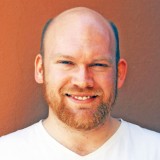
Andy Shuttleworth took his first degrees in Archaeology at the University of Liverpool and completed his PhD in 2013 on ‘An Anthropological Assessment of Neanderthal Behavioural Energetics’. He is currently Lecturer in Human Palaeoecology at Queen's University Belfast
His research interests are in Palaeolithic archaeology with a particular focus on Neanderthals, Anatomically Modern Humans and the Middle to Upper Palaeolithic transition.
In DISPERSE he is a member of the Palaeolithic landscape survey team in SW Saudi Arabia.
>> Institutional webpage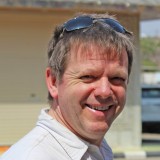
Anthony Sinclair is a specialist in Palaeolithic archaeology and is currently Professor of Archaeological Method and Theory in the Department of Archaeology, Classics and Egyptology at the University of Liverpool.
His research interests are the manufacture and use of lithic technology and its social and cognitive analysis, the human perception of landscapes and conspecific communities, and the archaeology of the 18th century.
He has fieldwork experience in Greece, Japan, Saudi Arabia, South Africa and the UK.
In DISPERSE he is a member of the survey team in SW Arabia and is responsible for lithic analysis.
>> Institutional webpage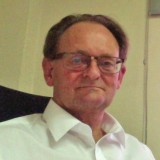
Derek Sturdy took his University training in archaeology in Cambridge, culminating in a PhD on the palaeogeography of reindeer exploitation, before embarking on a career in engineering design and business consultancy. He is currently based in the Philippines as a partner in Robur Investment Resources, and is Director of the Southern Levant Human Environment Project.
His research interests are in online database design and mapping, landscape reconstruction and testing of climatic models.
He has conducted field research in Germany, Greece, Israel and Switzerland, and his role in DISPERSE is the building of an online database and online atlas of prehistoric and historic Galilee and adjacent areas, with the aim of testing models of land use and climate change.
>> Institutional webpage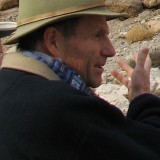
Amotz Agnon is Professor of Geology and Geophysics at the Earth Science Institute of the Hebrew University, Jerusalem.
His research interests are in earthquake geology and mechanics, mid-ocean ridge and ophiolite dynamics, palaeomagnetism, sea-level change and glaciation
He has carried out fieldwork in California, Cyprus, Israel and Jordan.
>> Institutional webpage
Nicholas Flemming is a marine geoarchaeologist from the National Oceanography Centre at the University of Southampton.
He was formerly Chairman of the IODE (International Oceanographic Data and Information Exchange), and Director of EuroGOOS (European Global Ocean Observing System).
His research interests are in the submerged archaeology and landscapes of the continental shelf, and he has led numerous underwater research expeditions in the Mediterranean, the Red Sea, Australia and the UK
He was the primary inspiration for the setting up of the Deukalion Planning Group in 2008, a small group of European specialists dedicated to carrying forward research on submerged prehistoric landscapes, which led to the formation of the SPLASHCOS Programme, and in turn to the setting up of the European Marine Board’s Working Group SUBLAND, of which he is Chairman, and which has recently produced its final report.
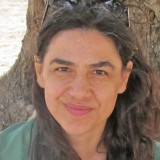
Nena Galanidou is Associate Professor of Archaeology in the University of Crete, with a BA from the University of Crete, an MSc in Archaeological Computing from the University of Southampton, and a PhD on Palaeolithic use of space from the University of Cambridge.
Her research interests are in the Palaeolithic and Mesolithic of SE Europe, where she has conducted extensive fieldwork. She is the scientific advisor of the Public Archaeology Series by Kaleidoscope Editions, Athens.
She directs the Lower Palaeolithic Lesvos Project, concerned with excavations at Rodafnidia (Lisvori), the first large-scale Acheulean site of the area, and Palaeolithic field survey, excavation and seabed mapping in the Inner Ionian Sea Archipelago.
>> Institutional webpage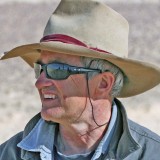
Simon Holdaway is Professor of Archaeology at The University of Auckland, and Honorary Professor at the Macquarie University and the University of Queensland.
His research interests are in low-level food production, landscape and coastal archaeology and stone artefacts, along with theoretical interests in time and the formation of the archaeological record.
He directs fieldwork projects in Australia, Egypt and New Zealand.
>> Institutional webpage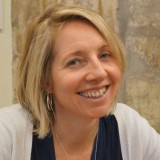
Penny Spikins took her early training in Palaeolithic and Mesolithic archaeology (BA Cambridge), and in GIS (MSc Leeds) and completed her PhD in Cambridge on the Mesolithic of the Pennines. She is currently Senior Lecturer in the Archaeology of Human Origins at the University of York.
Her research interests are in modelling human responses to environmental change, submerged landscapes, Neanderthals, the moral and social basis of human evolution and dispersal, and the role of material culture in the evolution of human emotions.
She has conducted fieldwork in northern England and Patagonia.
>> Institutional webpage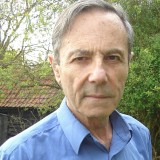
Claudio Vita-Finzi taught in the Geological Sciences department at UCL, where he is Emeritus Professor, and is currently Scientific Associate in Earth Sciences at the Natural History Museum.
His research focuses on environmental history with an emphasis on chronology, and he is currently working on instrumental and geological evidence for solar fluctuations.
He has carried out geological and geoarchaeological fieldwork in the Americas, the Mediterranean, the Near East, Saudi Arabia and SE Asia.






